Emily Day: We Needed a Place to Live
For Emily Day and her husband, Whittier, the move to Richfield was a necessity. The Day family had been living on a rented farm in Bloomington that was to be sold. They purchased a home built before the war, and three adjacent 50' lots. In an interview with Thomas Saylor in 2007, Mrs. Day remembered her Richfield neighborhood during the 1940s and 1950s.
Audio
Transcript
TS: Let me put some information on the record. Please correct me if I have any mistakes here. You were born on October 20, 1913 in Chicago, Illinois, and you grew up in Columbus, Ohio. Moving forward, you moved to Minneapolis in 1942, and at that time you were the director of a settlement house and I believe you said it was at 24th and Park. Is that right?
ED: Yes.
TS: 1944 you were married. Your husband was A. Whittier Day, is that correct?
ED: That’s right.
TS: And he was the head of the Youth Conservation Commission I think you mentioned, a program started by Governor Luther W. Youngdahl. I found that conversation interesting. For the purposes of our project, you moved to Richfield in . . . was it 1949?
ED: Yes.
TS: 1949. So until that time where had you been living before you moved here?
ED: Just before we moved here we were living on a farm in Bloomington. I mean a real farm. Off of Old Shakopee Road. The tractors were working in the fields on part of the property. But then it was a really old house and the owners decided to raze it and sell the property to other people. So we had to find a place to live, and the housing shortage was very severe right after the war. We found one house in Richfield, and we moved here that winter.
TS: And it’s the same house that we’re sitting in. 7340 Clinton Avenue South.
ED: Yes.
TS: This house pre-dates the war, doesn’t it? It’s an older house. Older than 1945.
ED: Yes. Right. I think it probably started about 1940. It was only about four or five years old at the time. A man from Lyndale Hardware Store built it. Mostly by himself, you can see. We still have a one-car garage. And you can see the kind of odds and ends of things that he used. There are boards in the garage that have been in a fire. We never had a fire here, but these were boards he could find and he could use.
TS: I see. So, in a sense, he pulled together what he could find to put the house together.
ED: Yes.
TS: It’s interesting. On the corner here it says Clinton Avenue. What’s the cross street out here?
ED: That’s 74th Street. That was through, but the other side of it was a farm, too. So this was just a one-block street with a dead end, which was ideal for kids.
TS: Sure. I also notice that your lot is much larger the way it sits than the other Richfield lots around here.
ED: Well, that’s right, because we bought four lots and they were very skinny lots. They are fifty-foot lots in the Wooddale Addition. He decided to get as many lots as he could because he wanted to sell as many pieces of property as he could.
TS: Sure. So for a developer it made perfect sense to divide those lots up, didn’t it?
ED: That’s right. Almost all the rest of Richfield, I think, has sixty foot at least.
TS: They do indeed. So these are skinnier lots. Now as it turns out you kept some of the lots right around your property.
ED: Yes. We kept three others beside ours for a long time. Until about . . . I suppose it must have been about 1967. We sold one of them because we needed the money.
TS: But you kept the ones on either side of your house.
ED: One on each side of this lot. Yes.
TS: Yes. When I pulled up to the house this morning it . . . your house is square, two story. It’s larger than the houses around it. It really almost stands out.
ED: It does. It has two stories and an attic besides that you could go up into. So that is quite a difference from anybody else in the neighborhood.
TS: And it clearly doesn’t match the Cape Cods or ramblers around it at all.
ED: No. It doesn’t. It was just a plain straight square house. That’s all.
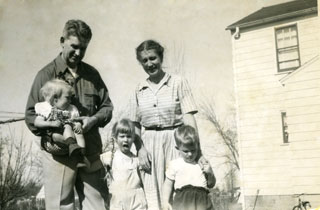
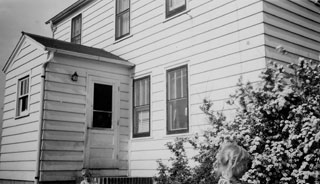
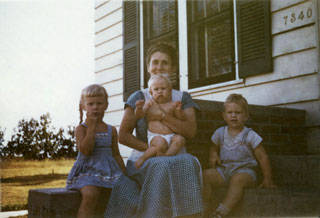
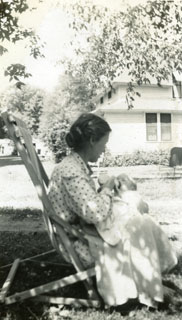
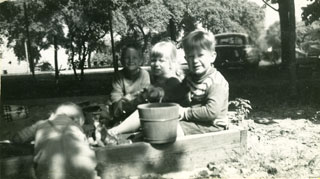
Source
Day, Emily; Thomas Saylor, Interviewer, Richfield Oral History Project, Minnesota Historical Society Oral History Collection, 2007.


